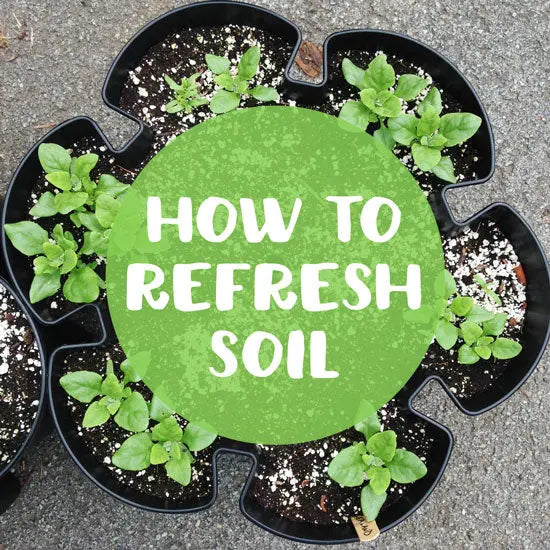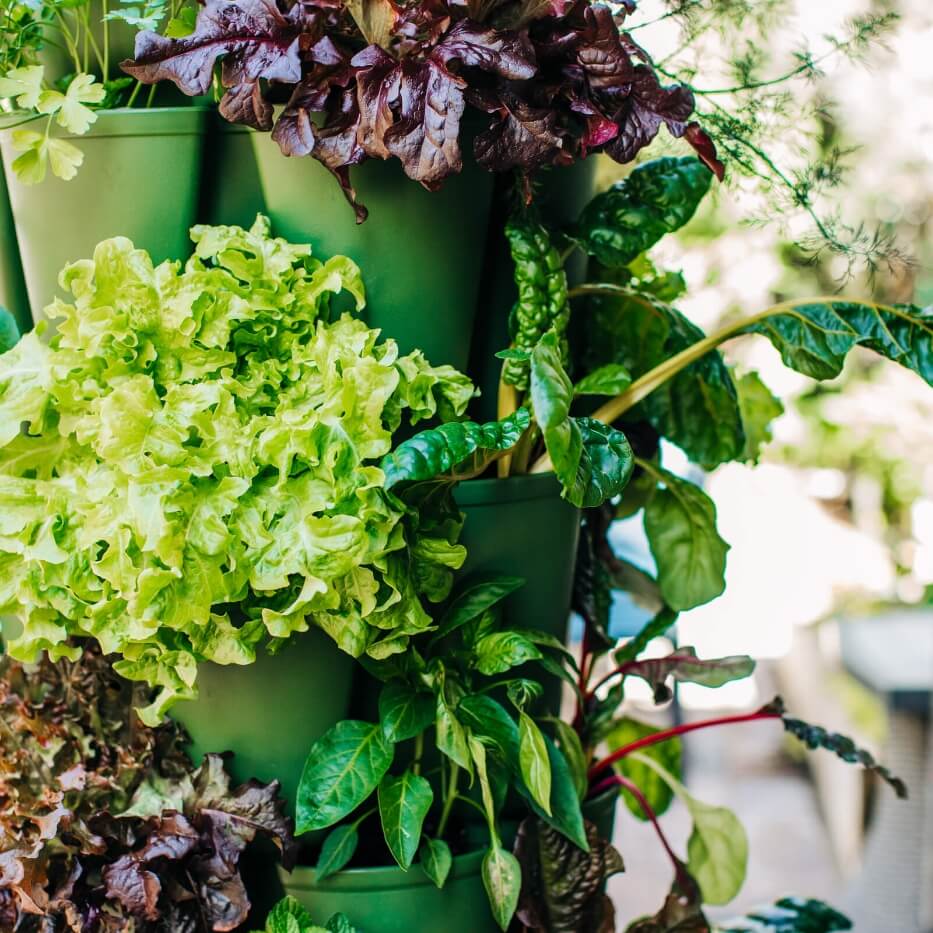Some people in the gardening industry recommend replacing potting mixes every season, but we don't find that to be necessary. Not only would that be very costly, but it would be inconvenient as well. Where we grow, we fit in 3 distinct crop rotations in per year - spring, summer and fall and we generally use the same potting mix for the entire year. In fact, next year we plan on using the same mix again. I'll explain how we do it and what we've learned along the way.
When researching how often to switch out container potting mixes, I unfortunately found very little info. So we have been doing some experimenting ourselves. We start with fresh potting mix in the spring and when those plants are tired and done producing, we amend the soil with some additional nutrients (tomato tone, organic all purpose vegetable fertilizer, fish emulsion, and others if needed), then top off with some fresh mix for the seeds to germinate in.

At first, we were a little weary of using potting mix that had large root systems from kale plants earlier in the season. We either set those containers aside to see how long it would take for the roots to decompose or broke up the roots and removed the large chunks of debris. We learned that even large vegetable roots decompose very quickly. Here's a photo of how that same potting mix looked after about 3 months of no care:

We were thrilled to learn that we didn't need to continue breaking up the roots and/or removing them after every planting. But that doesn't mean that the potting mix doesn't need any help between plantings or seasons. Like I mentioned above, we do continue to top off the containers with fresh potting mix as needed and add amendments as needed.

The amendments you add may need to change depending on the type of crops you are growing. For example, when growing leafy greens, we add higher nitrogen fertilizers to help give the plants those extra nutrients to put on more green growth. We do the opposite for our summer crops such as tomatoes and peppers. We add amendments with very little nitrogen because they are blooming/fruit producing crops that need much less nitrogen. In short, look up what type of fertilizer your plants need and add that to your container mix to refresh it for the new season.

Along those same lines, seeds germinate best in a sterile soil. That's why we recommend topping off your planters with fresh potting mix and not just planting them in the soil that was used for the previous crop.
Since you are already giving your potting mix a refresh, now is a great time to check the PH. Testers are pretty cheap, usually around $6-10 and will last for years. Generally, vegetable plants like the soil to be slightly acidic, right around 6.6-6.7. Some plants like it even more acidic - like blueberries. If you soil is a bit on the high side (over 7.0), add a granular soil amendment before planting to help bring that PH down.

Other things to look out for when re-using your soil is to be on the look out for pests. Sometimes bugs can lay eggs in the soil that wreak havoc on the next crop, or sometimes you'll have to look up on getting rid of voles from your yard because they're digging holes left right and center. It is also possible that some diseases could come back and attack your next crop. This is where crop rotation comes in handy. For example, if you plant cabbage in the spring, you may want to grow tomatoes in the summer, and lettuce in the fall. The same pests that loved eating your cabbage (I'm looking at you cabbage worms!) won't enjoy your tomatoes or lettuce. Same goes for disease. It's not fool proof, but crop rotation certainly does help - both with in ground gardens and container gardens. No one wants to have pests paying a visit to your crops, as this can harm the health of people who decide to eat the lettuce, tomatoes or cabbage, especially if you don't know that they've been there. If you find any pests near your garden, it is important that you contact someone similar to this new jersey terminix office as soon as you can, before they find an opportunity to come into your home. This will then cause problems for the people who live in your house.That is why you must consider crop rotation if you want to keep your crops safe from pests. Of course, with the GreenStalk Vertical Planter, you can grow nearly any vegetable making crop rotation simple.

Whatever potting mix you choose to start out with, just be sure to get something lightweight with a fine texture. Look for ingredients such as peat moss, coco coir, vermiculite, perlite, compost, bat guano, etc. Don't use anything labeled "topsoil" or "garden soil" because they will be much too dense for container gardens. Also, big chunks of wood is a sign of a low quality potting mix. You want to look for something high in moisture retention and formulated specifically for containers. If you aren't sure, just ask your local garden center - they are a wealth of information!











